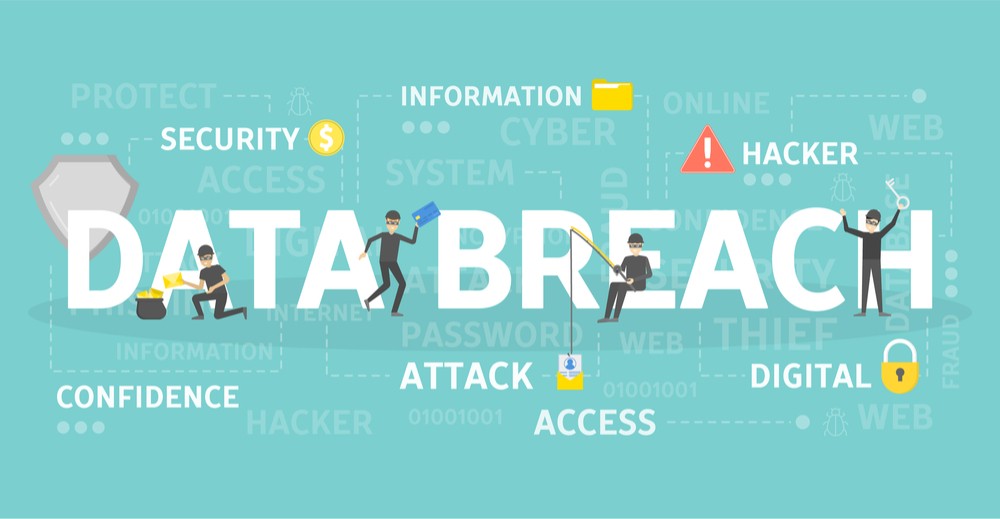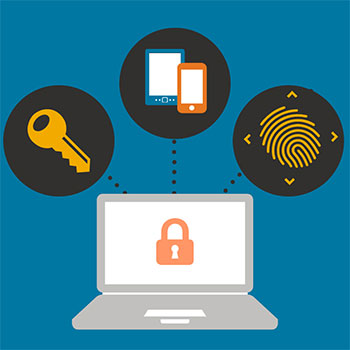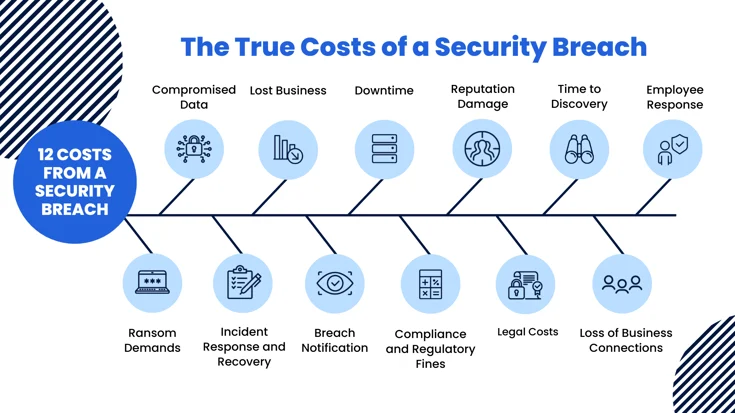Discovering that your digital sanctuary has been breached can send you into a tailspin. Panic sets in as you wonder, “What to do if your data is breached in a digital payment platform?” Take a deep breath, because I’ve got you covered with action-ready steps to regain control and secure your information. Knowing what to do right away matters. We’ll dive into immediate actions you should take post-breach, ways to boost your digital payment defenses, tips to keep a vigilant eye on your financial identity, and the recovery path forward if the worst happens. Starting now, I’ll guide you through each critical move to make after a breach, ensuring you’re informed, prepared, and ready to take back your peace of mind.
Immediate Actions Post-Breach
Assessing the Extent of Data Compromise
Oh no, your data might be in someone else’s hands! Here’s what to do first. Check your accounts. Look for signs of things you did not buy. Your goal is to see how bad the breach is. It can seem scary, but knowing is key to fixing it. You need to act fast. Quick action can limit harm.
Think about what info was on the payment app. Was it just your credit card, or more? Email and passwords may also be at risk. Make a list of what might be stolen. This will help you take the next steps.
If your credit card info was stolen, someone might misuse it. Watch your card statements like a hawk. Look for any charge you don’t know. If you see one, report it right away. Call the number on the back of your card. Tell them what you found. They can block your card and send you a new one.
Your personal info can help thieves steal your identity. It’s a big deal, but there are ways to fight back. You must tell the right people. Your bank, credit card company, and even the police can help you.
Contacting Your Financial Institution
Now, pick up the phone and call your bank. Do it fast. The sooner they know, the quicker they can help protect your money. Their number is on your card or online. Tell them what happened. They’ve seen this before and know what to do. They’ll likely ask you some questions. Answer as best you can.
Your bank can watch your account for strange stuff. They might even shut down your card for safety. This stops thieves from using your money. They’ll also tell you how to get a new card. That’s important for keeping your money safe.
Also, change your online banking password. Use a strong one this time. It’s like getting a better lock for your door. And if you can, set up something called multi-factor authentication. Yes, it’s a mouthful. But it’s like having an extra lock. This makes it way harder for bad guys to get in again.
Remember, time is of the essence. Don’t let fear stop you. You’ve got this! Quick moves now can save you a lot of trouble later. Keep a cool head. Take these steps to get back on track. Your money and peace of mind are worth it.
Protection comes with knowing how to act. Let’s keep our digital wallets safe together. And hey, share these tips with others. We’re all in this fight against fraud.
Enhancing Your Digital Payment Security
Setting Up Multi-Factor Authentication
Here’s a fact: Better locks make safer homes. The same goes for digital payments. You can add extra locks to your accounts. It’s called Multi-Factor Authentication, MFA for short. Right after a data breach, this is a must-do.
First, know what MFA is. It’s a way to check if it’s really you using your account. Think of it like a game where you pass three levels to win. But here, you pass these levels to get into your account. Each level is a new check. It could be a code sent to your phone, a fingerprint, or even your face!
Now, let’s set it up. Go to your payment app. Find the settings menu. Look for ‘security’ or ‘account’ options. Click on anything that says ‘Two-Factor Authentication’ or ‘Multi-Factor Authentication’. Follow the steps given. They will guide you to turn this feature on.
“Is it hard to set up?” Not at all! Most of the time, it’s just a few taps on your phone. And it’s worth every tap. It’s like getting a big guard dog for your online cash.
Updating Passwords and Security Questions
Next, let’s talk about passwords and secret questions. A data breach means bad guys might have your password. And believe me, they will try it on every door – bank, email, you name it.
So, what to do? Change your passwords. All of them. I know, big task, but very, very important. Make each password unique and tough to crack. Use letters, numbers, and symbols.
How long should it be? Think about a password like a toothbrush. The longer, the better. Aim for at least 12 characters. And just like you wouldn’t share your toothbrush, don’t share your passwords.
What about secret questions? Those are the questions you answer to get your password back. Don’t use easy stuff. “What’s your dog’s name?” That’s child’s play for a hacker. Pick hard questions. Better yet, lie. “Mother’s maiden name?” “Batman.” Just remember your answers.
“Is it enough to change my password once?” Nope. Do it often. Every few months or when a breach happens.
Still worried your financial info might get into the wrong hands? Let’s take this a step further. Call your bank or payment service. Tell them what happened. They can watch your account for fishy stuff.
Can’t remember all this? Write it down. Keep your new passwords and MFA codes safe, though. Treat them like the key to your treasure chest.
And that’s it! You’ve just learned how to lock up your digital dollars tight. Remember, better digital locks make safer digital wallets. Now go on. Secure your cash online and rest easy knowing you’re a hard target for the baddies.
Monitoring and Protecting Your Financial Identity
Enrolling in Credit Monitoring Services
After a data breach, quick action is key. Credit monitoring is your first guard. This service watches your credit files. It alerts you to changes. Changes could mean someone is messing with your money. When you sign up, pick a service that checks reports from all three credit bureaus. This way, you cover all bases.
Why do this? Well, hackers might open accounts in your name. With monitoring, you’ll know fast. Then you can block them. It’s like a watch dog for your credit. You sleep, it guards. Some services are free, others charge. Start with free ones. Later, if needed, think about paid plans. Remember, quick sign-up means quicker alerts.
Initiating Fraud Alerts with Credit Bureaus
Your next move is a fraud alert. This tells credit bureaus to watch out for trouble. It makes it hard for thieves to open more accounts. You only need to call one bureau to do this. They will tell the others. This alert lasts for one year, but you can renew it.
How does this help? It adds steps for credit in your name. Lenders must check more. They might need to call you. This slows down thieves. They don’t like hurdles. Plus, it buys you time. Time to find and fix other problems. Best part? It’s free to set this up.
Here’s a thought. If your info gets stolen, it might be out there for a while. Thieves can wait. But with a fraud alert, you make their job tough. They steal to make money easy. With alerts, nothing is easy. So, often, they give up. Then, they move on. Your alert keeps them away.
To sum up, a fraud alert and credit monitoring are your shields. They spot signs of fraud. They help stop more damage. With these tools in place, you can take a deep breath. Then, you’re ready to handle more cleanup. It’s like putting band-aids while you find a doctor. They won’t fix everything. But they start the healing and keep you safe for now.
Legal and Recovery Processes
Reporting the Incident to Law Enforcement
Act fast if your payment app gets hacked. First, call the police. Tell them what happened. This helps you and stops the thieves too. Keep the report safe – you might need it later.
When your financial data is stolen, going to the law is key. It’s not just about getting help. It’s also about getting the theft on record. This can make a big difference down the road. It’s like telling the world that it wasn’t your fault.
Next, call your bank or card company. Say “My account was breached.” This can stop more theft. Ask them for help and what to do next. They deal with such issues often. Their tips are very useful.
Understanding Your Privacy Rights and Legal Recourse
Your data is yours, and its safety is a right. Law says companies must keep it safe. If they fail, they have to help you and may owe you more. Learn what rights you have. It’s not just about the now, but also the later. Bad guys can use your data in many ways. So knowing your rights helps you stay safe.
When bad things happen, knowing what you can expect and ask for is smart. You might be able to get cash for the trouble caused. Or get services to protect you from further harm. Each case is unique, so check with someone who knows the law well. They’ll tell you what can be done.
After a breach, you might feel lost or confused. It can seem like too much to handle. But remember, steps are there to guide you. Start with these, one by one. You’ll get through it. And next time, you’ll be even stronger, knowing all this stuff. Always stay informed and ready. It’s your best shield against online harm.
We’ve walked through crucial steps after a data breach, from checking the damage to securing your money. Next, we’ve covered how to toughen your digital payment shields with multi-step verifications and fresh passwords. Remember, keeping an eye on your credit is key, so sign up for monitoring and alert the bureaus if something’s fishy. Finally, know that the law’s got your back. Report the crime and learn about your rights. Stay alert, stay safe, and take control. Your financial security is in your hands. Own it, protect it, and keep it locked down tight.
Q&A :
What steps should I take immediately after my data is breached on a digital payment platform?
If you find out that your data has been compromised on a digital payment platform, it’s essential to act swiftly to protect your finances and personal information. First, contact the payment platform’s customer support to report the breach and follow their guidance. Change your passwords and PINs associated with your accounts. Review your account for any unauthorized transactions and flag them to the platform and your bank. Monitor your bank statements and credit reports closely for any signs of identity theft.
How can I secure my digital payment accounts to prevent future breaches?
To safeguard your digital payment accounts against potential breaches, start by creating strong, unique passwords for each account and enable two-factor authentication where available. Avoid using public Wi-Fi networks when making transactions and keep your devices’ operating systems and apps updated. Regularly monitor your accounts for suspicious activity and consider using a dedicated device for financial transactions to minimize risk.
Can I claim compensation for a breach of my data on a digital payment platform?
In some cases, you may be entitled to compensation if your data has been breached on a digital payment platform, particularly if the breach occurred due to the company’s negligence. Your eligibility for compensation may depend on the laws in your country and the extent of the damage incurred. It’s advised to consult with a legal professional to understand your rights and explore options such as joining class-action lawsuits if available.
What are the signs that my digital payment account might have been compromised?
Warning signs that your digital payment account may have been compromised include unauthorized transactions on your account statement, unexpected account notifications, changes to your account information that you didn’t make, and charges for purchases you did not authorize. If you receive alerts for login attempts or notice that your password or phone number has been changed without your knowledge, these could also be indicators of unauthorized access.
Who should I notify about a data breach in a digital payment platform?
In the event of a data breach, notify the digital payment platform immediately so they can take appropriate measures to secure accounts and investigate the incident. You should also contact your bank and credit card issuers to inform them of the breach and ask them to monitor your accounts for fraudulent activity. Reporting the breach to relevant authorities, such as a data protection agency or consumer protection organization, can help ensure the incident is recorded and managed correctly.



